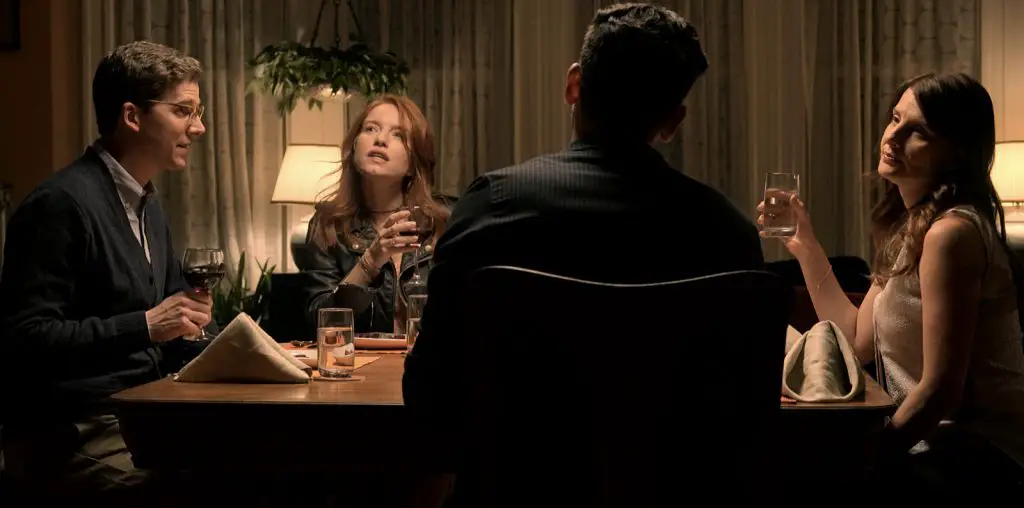
“The Realist,” Scott Stark’s mini-epic of mannequin love amidst consumer goods, is made up primarily of stereo still images Stark shot in malls and department stores. The basic visual strategy of “The Realist” is to take the left and right images from a 3D still and alternate them extremely rapidly, in single frames. This doesn’t quite produce a genuine 3D effect, but instead creates a shimmering excitement which permeates the film, like an opera sung with constant vibrato. Objects which lie near the image’s focal plane will look almost still, while those on the periphery oscillate wildly. Many sequences alternate frames from three or more images, creating more complex juxtapositions. Stark takes these shaking scenes and layers them with pans, zooms, and dissolves, and thus creates quite a complex and satisfying film in purely abstract, visual terms. Much of “The Realist” is taken up with this kind of visual richness.
The film’s editing rhythms adhere extremely closely to the complex instrumental musical score, from a 1998 composition by Daniel Goode. Goode’s minimalist music is a perfect match for the film. The boringly regular rhythms are as dead and inhuman as the consumer goods we’re watching, but the harmonic fragments, both pretty and dissonant, recall futile attempts to evoke human feeling.
“The Realist,” in the form of an abstracted series of visual meditations with a hint of a narrative, is a quintessentially American film. The world of the mannequins stands in for our world, where we are defined by what we consume. Like Velveteen Rabbits, the mannequins long to be real and form human attachments, but they consist entirely of surface appearance, so there is nothing for them to become attached to.
A male mannequin serves as a kind of protagonist of the film, as he gazes longingly at female mannequins (often headless), contemplating their different clothing styles: rocker chick, earthy, cheaply elegant. This world where we are reduced to a series of pre-packaged “looks” will seem sickeningly familiar to American viewers.
With their archaic smiles, the mannequins seem to be idealized humans, like Greek statues. Unlike Greek statues, they are meant to be blank and generic. A mannequin is in fact a screen, a blank canvas which says to the viewer “wouldn’t you look great wearing this?” So they are reduced, in the end, to mirrors. They reflect our own blankness back at us.
Stark complicates the story when the mannequin attempts to escape from the store into the “real world.” There is a hell-like sequence, where severed mannequin limbs quiver in torture, among plants and trees, an organic world where they cannot survive. The mannequin stares longingly at cars and roads, where the shoppers are free to come and go from the store at will. For a mannequin, the ultimate objects of their seduction are shoppers, and they seem fascinated by our world.
One sequence alternates gorgeous flower shots with consumer goods. Flowers are basically eye-catching displays which plants use to tell pollinators “this way to the nectar,” so they are a good example of how deeply rooted the impulse to create advertising runs in our biology.
The underpinning of “The Realist” is an extremely bleak vision of a consumer society as a world where all life, spontaneity, and inner reality is drained out of human culture, leaving a meaningless drama of mechanical gestures. But it presents this vision in the form of a rich, varied and seductive series of visual compositions, reminding us just how seriously seductive the siren call of consumerism can be. Go forth and shop at your peril; but try to do so as a realist.
